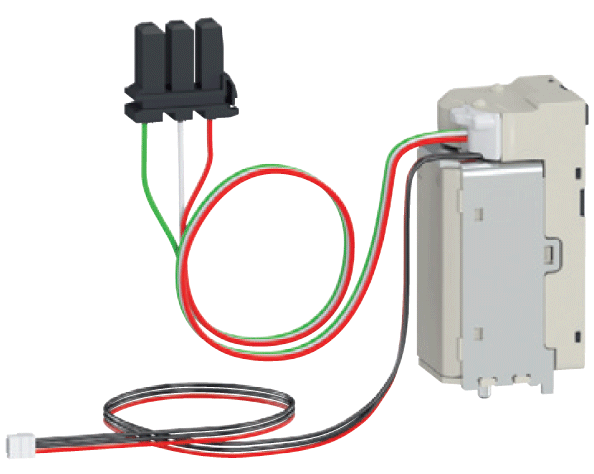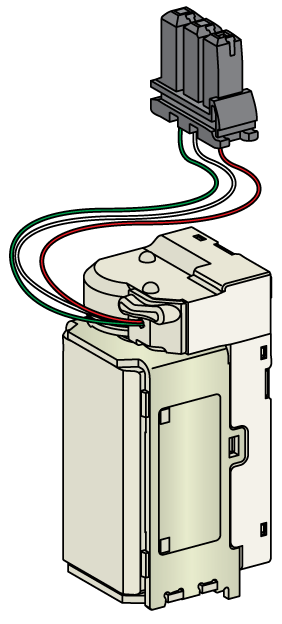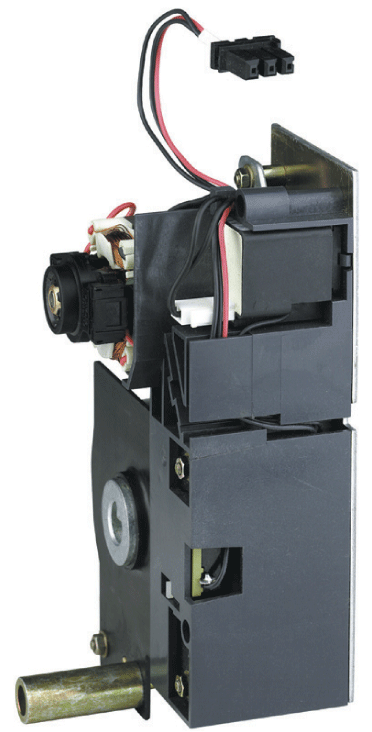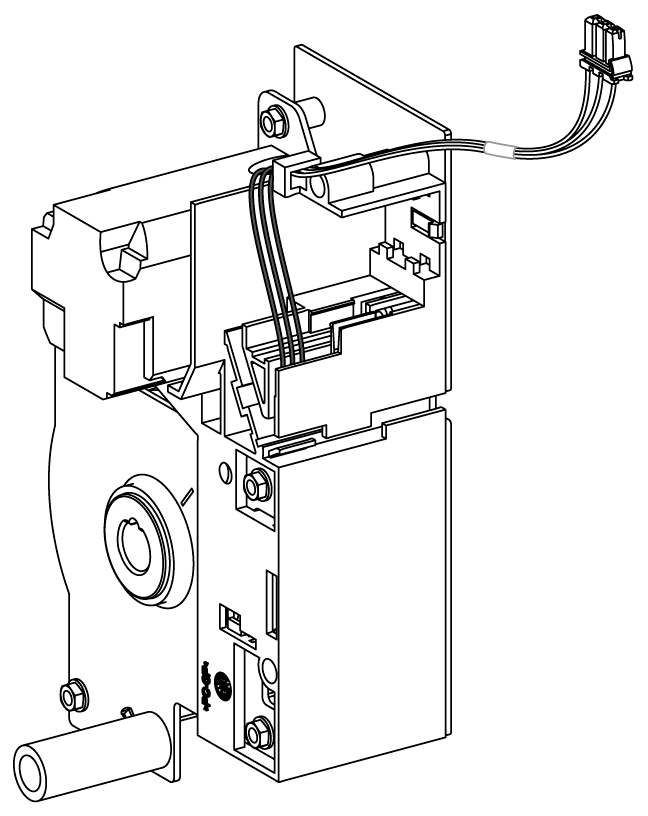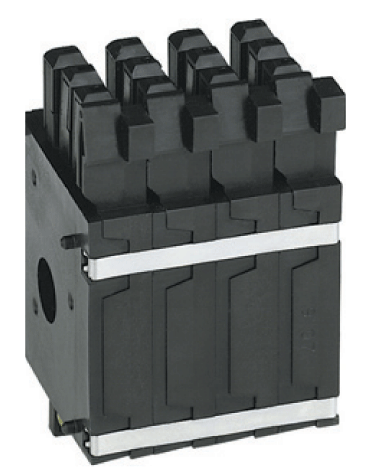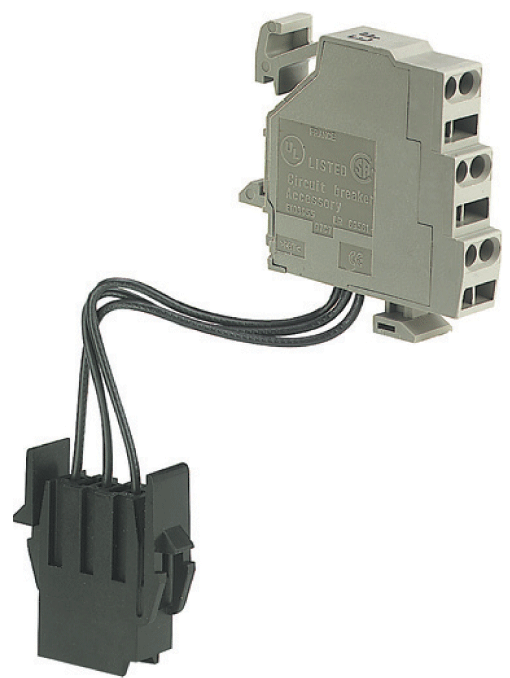How to Maintain Auxiliary Circuits
Functions
Auxiliary circuits are made of two parts, an electrical or mechanical accessory with the associated wiring:
-
Voltage releases (XF, MX, MN)
-
Gear motor (MCH)
-
Indication contacts (OF, CE, CT, CD, SDE, PF)
Auxiliary wiring links devices and transmits the following information:
-
Orders to the control devices
-
Status-condition information
Voltage Releases
The voltage releases (XF, MX, MN) can be standard or with diagnostic and communicating function (XF, MX) or diagnostic function (MN).
The voltage releases (XF, MX, MN) can be standard or with communicating function (XF, MX).
The XF closing voltage release closes the circuit breaker instantaneously when powered if the spring mechanism is charged.
The MX opening voltage release opens the circuit breaker instantaneously when powered.
The MN undervoltage release instantaneously opens the circuit breaker when its supply voltage drops to a value between 35% and 70% of its rated voltage.
In MasterPacT MTZ devices, diagnostic and/or communicating voltage releases are continuously supervised by the control unit when they are declared in EcoStruxure Power Commission software. If a breakdown or power outage occurs, or the recommended number of operations is reached, an alarm is generated to take action for replacement.
It is important to periodically check operation of the voltage releases at minimum values. Whether the auxiliary needs to be replaced depends on the operating conditions and environmental conditions.
It is recommended that you replace voltage releases every 15 years.
MCH Gear Motor
The MCH gear motor automatically recharges the operating mechanism springs as soon as the circuit breaker is closed.
The MCH gear motor makes it possible to close the device immediately after opening. The spring charging handle serves as a backup if the auxiliary voltage is interrupted.
Given the mechanical forces exerted to charge the mechanism, periodic checks on the operation of the MCH gear motor and the charging time are required to help ensure the device closing function.
With MasterPacT MTZ devices, the number of charging operations is recorded, giving information on the remaining useful life of the MCH gear motor.
With MasterPacT MTZ devices, the number of charging operations is recorded, giving information on the remaining useful life of the MCH gear motor.
Indication Contacts
Contacts indicate the following information:
-
OF: position of the main contacts (opened or closed)
-
CE, CT, CD: position of the device in the chassis (connected, test, or disconnected)
-
SDE: trip due to an electrical fault
-
PF: the device is ready to close
This information enables a remote operator to respond as necessary. Incorrect indications can result in erroneous device operation.
Improper contact performance can be caused by vibrations, corrosion, or abnormal temperature rises.
Preventive maintenance consists in regularly checking that contacts conduct or isolate correctly, depending on their position.
Auxiliary Wiring
Auxiliary wiring is used to transmit the following information:
-
Orders to the various control devices
-
Status-condition information
Incorrect connections or damaged insulation can cause unintended opening or non-operation of the circuit breaker.
The auxiliary wiring must be regularly inspected and replaced as required, particularly in environments with vibrations, high ambient temperatures, or corrosive atmosphere.
Degradation Factors
The factors which can cause degradation of the auxiliaries are the following:
-
High ambient temperature
-
Humidity
-
Corrosive atmosphere
-
Vibration
Potential Hazards
Performing regular maintenance on the auxiliaries can help to avoid the potential hazards and consequences listed in the following table.
|
|
Consequence |
|
|---|---|---|
|
Personal injury |
Equipment damage |
|
|
Loose wiring |
Electric shock |
– |
|
Loss of local control (open/close), such as emergency stop |
Death or serious injury |
– |
|
Loss of remote control (open/close) |
– |
Unwanted operation |
|
Misleading information |
– |
Unwanted operation |
Preventive Action
The following table lists the preventive maintenance procedures to be performed to maintain the control unit.
|
Maintenance program |
Preventive action |
Procedure |
|---|---|---|
|
Routine end-user preventive maintenance |
Check auxiliary wiring and insulation. |
Auxiliaries NII_Z_1 Auxiliaries NII_1_1 Auxiliaries NII_ZA_1 |
|
Intermediate end-user preventive maintenance |
Check operation of indication contacts (OF, PF). |
Auxiliaries NIII_Z_1 Auxiliaries NIII_2_1 Auxiliaries NIII_ZA_1 |
|
Check closing operation with XF closing voltage release at 0.85 Un. |
Auxiliaries NIII_Z_2 Auxiliaries NIII_2_2 Auxiliaries NIII_ZA_2 |
|
|
Check opening operation with MX opening voltage release at 0.70 Un. |
Auxiliaries NIII_Z_3 Auxiliaries NIII_2_3 Auxiliaries NIII_ZA_3 |
|
|
Check closing and opening operations with MN undervoltage release. |
Auxiliaries NIII_Z_4 Auxiliaries NIII_2_4 Auxiliaries NIII_ZA_4 |
|
|
Check time delay of MNR delayed undervoltage release. |
Auxiliaries NIII_Z_5 Auxiliaries NIII_2_5 Auxiliaries NIII_ZA_5 |
|
|
Manufacturer preventive maintenance |
Check opening time of MX opening voltage release. |
Contact your Schneider Electric Services representative. |
|
Check closing time of XF closing voltage release. |
||
|
Check opening time of MN undervoltage release. |
||
|
Preventively replace the voltage releases XF, MX, MN. Check the service life of the voltage releases XF, MX, MN. |
For more information, refer to Preventive Maintenance Programs.

